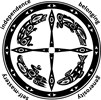Code of Academic Ethics and Honesty
Code of Academic Ethics and Honesty
Gladstone Secondary School Policy
Gladstone Secondary School is committed to excellence in learning which meets the highest standards of personal, ethical and moral conduct. Any of the following actions would result in a breach of this standard.
- Submitting another person’s work in part or in whole as their own
- Failure to properly cite an outside source
- Submitting the same assignment more than once
- Cheating on tests, exams, quizzes or any other form of evaluation
- Consciously assisting another student to attain marks fraudulently
- Improper use of technology such as using cell phones, PDA’s, cameras, internet, headphones, electronic translators, etc. when not authorized.
Cheating is defined as:
Any attempt by a student to complete an examination or assessment by unfair means. Unfair means may include any one or more of the following:
- Plagiarism “Plagiarism is a serious academic offence. It is intellectual theft. Any use of another’s research, ideas or languages without proper attribution may be considered plagiarism”. (Gordon, s.d., p.l).
Plagiarism is the unacknowledged use of another person’s work (written or visual) and the presentation of that work, in whole or in part, as one’s own, or assisting in the act of plagiarism by allowing one’s work to be used in this fashion.
This may include:- presenting the words of ideas of another as one’s own, or
- submission of the same work to more than one teacher.
- Obtaining or providing unauthorized use of books, notes, text, or electronic devices.
- Obtaining or providing information concerning all or part of an examination prior to the examination.
- Copying work done by another person.
- Taking an examination for another student or arranging for another person to take an exam in one’s place.
- Altering or changing test answers after submission for grading, altering or changing grades after grades have been awarded, or altering or changing other academic records.
- Making any other attempt to improve grades using means that have not been or would not be approved by your teacher, (e.g. being absent without an acceptable reason from a test or class assignment.)
- Submitting an assignment more than once.
- Removing an exam from the classroom or test area.
- Consciously assisting another student to attain credit through misrepresentation.
1. Teacher Responsibility
- Enforce policy consistently. Inform students of consequences.
- Work on students’ attitudes towards academic dishonesty. Create an atmosphere where it is not acceptable. Positive peer pressure encouraged.
- Minimize the opportunity to cheat.
- Report all incidents to administration.
- Document the incident.
2. Counsellor Responsilbity
- To counsel students around the whole issue of cheating, its meaning and consequences (long and short term)
- Consult and sign the Academic Dishonesty form.
3. Administration Responsibility
- Meet with the students and go over the incident.
- Refer the student to their counsellor.
- Send a letter home to parent/guardian (possible meeting set up)
- Consult the Academic Dishonesty form and record the action taken and return a copy to the counsellor and teacher.
- To see that consequences are in place.
- To encourage consistency among all staff.
Academic Dishonesty Consequences
On first offence:
- The incident may be recorded on the student’s discipline file.
- The student will not be eligible for Honour Roll recognition for that particular term.
On second offence:
- The student may not be eligible for Passport to Education for that academic year.
- The student may not be eligible for School-based Scholarships for that academic year.
- The student may be suspended or transferred.

